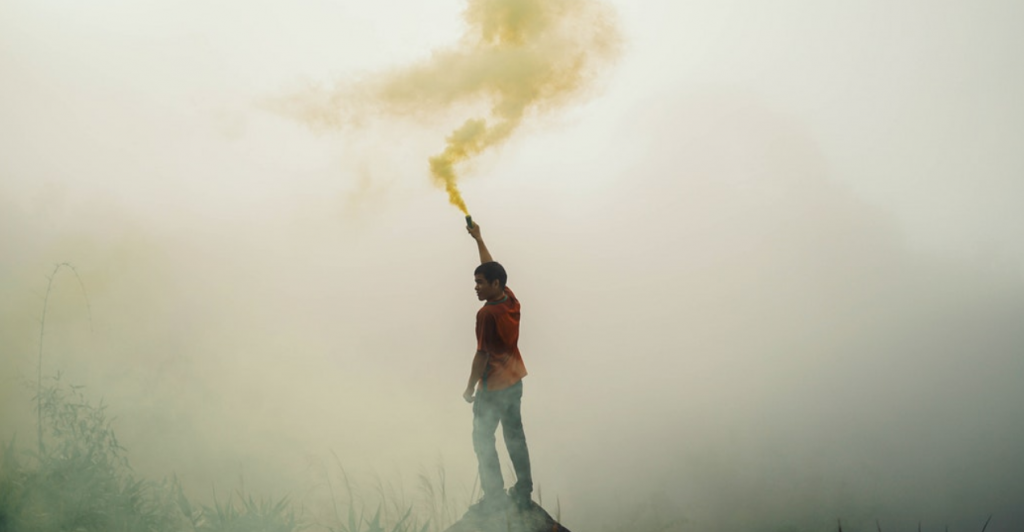It’s always a good idea to be mindful of at least a few different signaling techniques that you can use if you ever get lost or stranded. However, you don’t need a lot of expensive smoke signals, flares, lights or audio devices to get the attention of rescuers. Instead, it’s better to focus on how to improve on some tried-and-true techniques to make them more-efficient and easier to deploy. Let’s look at a few examples.
Signal Torch
You don’t need a lot of fabric, pine tar or fuel to create a good signal torch. While these can increase burn time, you can accomplish the same thing by using some birch bark instead. All you need to do is take a long branch, split one end with your survival knife to create a gash that’s about six inches long, gently pull it apart, and stuff it with as many sheets of dried bark as you can. Head to a suitable location, light it up, and you’re good to go. Just remember to bring some extra bark with you for refueling.
Smoky Fire
The easiest way to make a smoke signal from a fire is to cover it with fresh, moist and full pine branches. However, you can also alter the color of the smoke by burning different kinds of material, and this can be useful when trying to make a signal that contrasts with the surroundings better. As a general rule of thumb, natural items will produce lighter smoke whereas man-made items will produce black smoke. Plastics, rubber, polyester or nylon and foamy material are just a few examples of what you can burn in an emergency to attract attention with darker smoke.
Ground Signs
If you want to write out a signal for help on the ground, you can either trace the message in the soil or sand, or you can use things like logs or rocks that will contrast with the background. However, it’s important that the shape of the message looks unnatural and stands out. This is why experts recommend that you make triangular signals, or make letters with triangular shapes, because they will clash with the surroundings, and this can increase the chances of getting found by search planes, helicopters or drones that may be patrolling the area.
Whistles
Nothing beats a whistle in terms of its effectiveness to produce sounds that will stand out like a sore thumb in the wilderness. However, how the whistle is used can mean the difference between being heard or someone confusing the sound for something else. A good rule of thumb to follow is to blow three short bursts at a time, with breaks in between. You can also make an S.O.S signal by blowing three short bursts immediately followed by three longer bursts and then another three short bursts.
Mirrors
While there’s nothing wrong with using a signal mirror to project a concentrated beam of light from your location, consider using a large sheet of Mylar or some aluminum foil instead. Wrap the edges of the sheet around two sticks, hold and pull them apart in your hands, and aim the device toward the sun. This will produce a larger, brighter and more-distinctive reflection that can be seen over greater distances.
These are just a few examples of ways to improve on some traditional signaling methods, but this is far from an exhaustive list. Take time to learn more about other techniques, and imagine ways that you can make them more-effective as well. One thing’s for certain: You can never have too many options at your disposal during a survival situation, but it’s important that whatever you use is as effective and efficient as possible.
